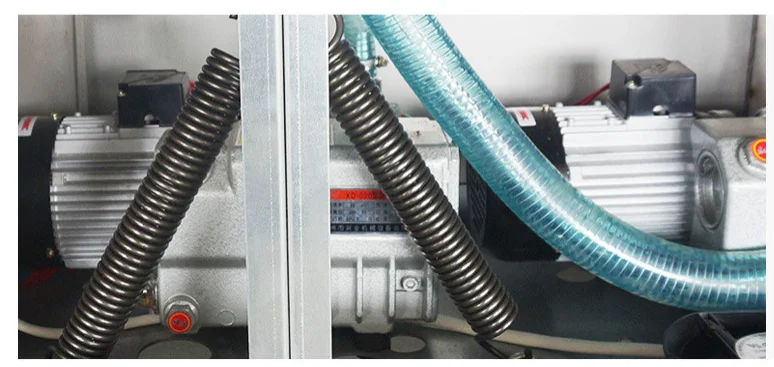Manual Feed Pellet Machine for Efficient and Versatile Animal Feed Production
டிசம்பர் . 09, 2024 16:46 Back to list
Manual Feed Pellet Machine for Efficient and Versatile Animal Feed Production
Understanding the Manual Feed Pellet Machine A Comprehensive Guide
In the realm of animal husbandry and agriculture, the efficiency of feed production plays a pivotal role in ensuring optimal growth, health, and productivity of livestock. Among various methods and machines developed for this purpose, the manual feed pellet machine has gained significant attention due to its simplicity, affordability, and effectiveness. This article aims to provide a comprehensive understanding of manual feed pellet machines, including their working principles, uses, benefits, and maintenance.
What is a Manual Feed Pellet Machine?
A manual feed pellet machine is a special equipment designed to manufacture feed pellets from powdered raw materials like grains, legumes, or other feedstock. Unlike automated machines, manual pellet machines rely predominantly on human effort to operate. Users feed the raw materials into the machine, and through mechanical means—often involving a screw or die system—the materials are compressed and shaped into pellets.
Working Principles
The operation of a manual feed pellet machine involves several stages
1. Material Preparation The raw materials must first be ground into a fine powder. This enhances the uniformity of the feed and ensures proper pellet formation. Often, ingredients such as corn, wheat, soybean meal, and vitamins are used, depending on the nutritional requirements of the targeted livestock.
2. Mixing Different ingredients are mixed thoroughly to create a balanced feed formula. This step is crucial for ensuring that the animals receive all essential nutrients.
3. Pelletizing Once prepared, the mixed feed is fed into the pellet machine. As the raw materials enter the machine, they are forced through a die under high pressure. The shape and size of the pellets are determined by the type of die used. The heat generated during this process helps bind the materials together.
4. Cooling and Drying After pelletizing, the pellets may need to be cooled and dried to ensure they harden adequately and maintain their shape. This step also helps in extending the shelf life of the feed.
Uses of Manual Feed Pellet Machines
Manual feed pellet machines are primarily used in small-scale farming operations, pet food production, and home-based animal feeding. They are ideal for farmers looking to produce customized feed pellets that meet specific dietary needs of various animals. This customization capability not only ensures better nutrition but also helps reduce feed costs compared to commercial feed options.
manual feed pellet machine

Moreover, these machines can be used to produce feed pellets for different types of livestock such as poultry, cattle, goats, sheep, and even fish, catering to a wide range of farming needs.
Benefits of Using Manual Feed Pellet Machines
1. Cost-Effective One of the most significant advantages of manual feed pellet machines is their affordability. They require minimal initial investment compared to large-scale, automated counterparts.
2. Simplicity These machines are easy to operate, with no complex mechanisms. Farmers can quickly learn how to use them without needing specialized training.
3. Customization Farmers have the flexibility to create specific feeds tailored to the dietary needs of their livestock, improving overall health and productivity.
4. Sustainability By using locally sourced raw materials, farmers can reduce transportation costs and carbon footprint, promoting sustainable agricultural practices.
5. Portability Many manual pellet machines are designed to be portable, making them ideal for farmers with limited space or those who move their operations frequently.
Maintenance of Manual Feed Pellet Machines
To ensure longevity and optimal performance, regular maintenance of the manual feed pellet machine is essential. Here are some maintenance tips
- Cleaning Regularly clean the machine after use to prevent any feed residue from affecting future production. - Lubrication Keep moving parts well-lubricated to reduce wear and tear and ensure smooth operation. - Inspection Routinely inspect the machine for any signs of damage or wear. Address any issues promptly to avoid more costly repairs later.
Conclusion
The manual feed pellet machine serves as a valuable tool for smallholder farmers, providing an efficient, cost-effective means to produce quality feed for their livestock. By understanding its operation, uses, and maintenance, farmers can leverage this machine to enhance productivity and sustainability in their agricultural practices. As the demand for animal protein continues to rise, such innovative solutions will play a crucial role in meeting the nutritional needs of livestock while promoting responsible farming.
-
High Performance Exhaust Fan – Efficient Ventilation Solutions for Home
NewsJun.10,2025
-
High-Quality Gestation Pen for Sows Durable Mobile Pig Pen & Simple Pig Pen Solutions
NewsJun.10,2025
-
High Quality Rabbit Cage Double Tier Designs & Welded Wire Mesh Supplier
NewsJun.10,2025
-
Floating Fish Feed Machine - High Efficiency Floating Fish Feed Extruder for Small Scale Production
NewsJun.10,2025
-
Premium Poultry Housing Solutions Mobile & Commercial Free Range Options
NewsJun.10,2025
-
Industrial FRP Fans Corrosion-Resistant Blades & Centrifugal Systems
NewsJun.09,2025






